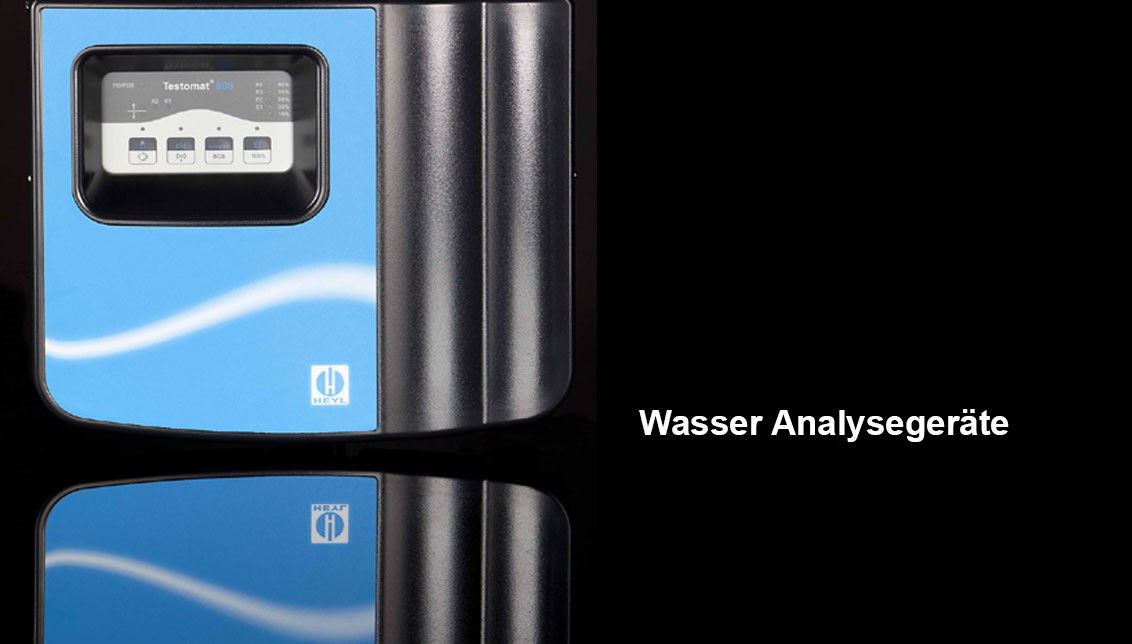The importance of silicate measurement in industrial water treatment
Silicate measurement is used to determine the content of dissolved silicon dioxide (SiO₂) or silicate (often as SiO₄⁴⁻ ions) in water.
Silicate measurement in industrial water treatment is essential for the following reasons:
- Protection of Boiler Systems and Turbines
Silicates can deposit as solid deposits (e.g., as silicic acid) on heat-transferring surfaces or in steam turbines at high temperatures and pressures. These deposits:
- Reduce heat transfer and lead to energy losses
- Increase the risk of corrosion
- Can cause mechanical damage, especially in turbines with tight tolerances
- Prevention of Glass Formation
At very high temperatures (e.g., in steam generators), silicates can form glass-like layers that are difficult to remove and require extensive chemical cleaning or removal through mechanical surface treatment.
- Quality Requirements in Sensitive Processes
In the semiconductor, pharmaceutical, or food industries, extremely pure water qualities are required. Even low silicate concentrations can contaminate products or disrupt production processes. Furthermore, deposits can form on instrument surfaces during the processing of medical devices, which must be considered critical in the context of further use.
- Early Indicator for Leaks
An unexpected increase in silicate concentration can indicate leaks or contamination in the water treatment system (e.g., in ion exchangers or reverse osmosis systems). Silicate ions are low-valence ions that are displaced from the resin surface in the presence of higher-valence ions.
- Optimization of Treatment Processes
Silicate measurement effectively supports the monitoring of ion exchangers, especially mixed bed resin systems, and can thus be used as an early indicator for the exhaustion of mixed bed cartridges. Another area of application is monitoring the silicate concentration before EDI to ensure the maximum permissible concentration for the module used.
How Does Silicate Measurement Work?
The most common method is based on photometric analysis, specifically on the molybdate reaction:
- Reaction with Molybdate: In an acidic environment, silicate reacts with ammonium molybdate to form a yellow silicomolybdic acid.
- Reduction (optional): This yellow compound can be further reduced with reducing agents (e.g., ascorbic acid or stannous chloride) to a blue dye (heteropoly blue compound).
- Photometric Evaluation: The intensity of the color (yellow or blue, depending on the method) is measured at a specific wavelength (e.g., 410 nm or 815 nm) with a photometer. The intensity is directly proportional to the silicate concentration.
What is Silicate Measurement Used for in Industrial Water Treatment?
Silicate measurement is used in industrial water treatment for monitoring in the following application examples:
- Boiler Feed Water & Steam Generators:
- Silicate can deposit as a stubborn, glass-like coating on heat exchangers and turbine blades. This leads to restricted heat transport and decreased efficiency of heat exchangers.
- Even low concentrations (< 20 µg/L) can be problematic at high temperatures and lead to damage to the steam turbine.
- Reverse Osmosis System:
- Silicate can block membranes.
- Monitoring helps prevent fouling and extend membrane life.
- Cooling Water Systems:
- To prevent silicate deposits in heat exchangers.
- Semiconductor and Electronics Industry:
- Extremely pure water is necessary here (Ultrapure Water). Silicate is a critical parameter that indicates residual contamination.
The following are typical applications of silicate measurement by industry sector:
- Power Plants / Energy Generation
- Silicate measurement at the condensate outlet or in the feed water.
- Goal: Avoid deposits on turbine blades or in the boiler.
- Alarm limits are often at 10–20 ppb (µg/L).
- Water Works & Desalination Plants
- Monitoring of raw water and outlet of reverse osmosis systems (RO).
- Protection of RO membranes from fouling.
- Typical limit values: < 5 ppm, depending on membrane type.
- Semiconductor and Electronics Industry
- Use in ultrapure water production (UPW).
- Extremely low limit values – often < 5 ppb.
- Silicate is used as an indirect marker for system defects or inadequate filtration.
The following illustrates the application possibilities of silicate measurement in a power plant as an example:
Typical Measuring Points
- Condensate outlet (after condenser)
- Early detection of leaks in the heat exchanger or contamination with raw water.
- Prevents deposits on turbine blades.
- Feed water after desalination/polisher
- Verification of the cleaning performance of ion exchangers or membrane systems.
- Protection of the steam generator from deposits.
- Demin plant (after mixed bed filter)
- Control of residual contamination after water treatment.
- Prevention of membrane damage in downstream systems.
Advantages for Power Plant Operation
|
Advantage |
Description |
|
Plant Protection |
Prevention of stubborn silicate deposits in boiler and turbine. |
|
Continuous Monitoring |
Early detection of breakthroughs or leaks. |
|
Maintenance-friendly |
Easy handling and long reagent service life. |
|
High Precision |
Accuracy in the lower ppb range possible. |
The Testomat 808 SiO₂ offers some specific competitive advantages compared to other silicate online analyzers, especially in industrial environments.
Competitive Advantages of the Testomat 808 SiO₂ in Comparison
|
Category |
Advantage of Testomat 808 SiO₂ |
Distinction from Competitors |
|
Reagent Consumption |
Very economical consumption through precise micro-dosing. |
Low reagent consumption. |
|
Mechanics & Longevity |
Robust, modular design with industrial mechanics – made in Germany. |
Proven and durable construction of individual components. |
|
Maintenance Friendliness |
Tool-free change of reagent bottles, easy cleaning and clear construction. |
User-friendly regarding service and commissioning. |
|
Low Measuring Range |
Measuring ranges from 0.3 – 1.2 mg/L– ideal for boiler feed water and ultrapure water. |
Freely scalable measuring range in ten gradations. |
|
Adaptability |
Freely configurable measuring cycles (interval), analysis triggering via external signals. |
High flexibility through free programming of measuring interval and external analysis triggering. |
|
Interfaces |
Analog 4–20 mA output + potential-free alarm contact; |
Well integrable into existing control systems, due to transmission of measured values and operating states using firmly defined mA values. |
|
Made in Germany Service |
Fast support & spare parts availability through German sales and service network. |
Short delivery times. |
|
Compactness |
Compact design: can be used wall-mounted. |
Space-saving due to compact design compared to some floor-standing units. |












